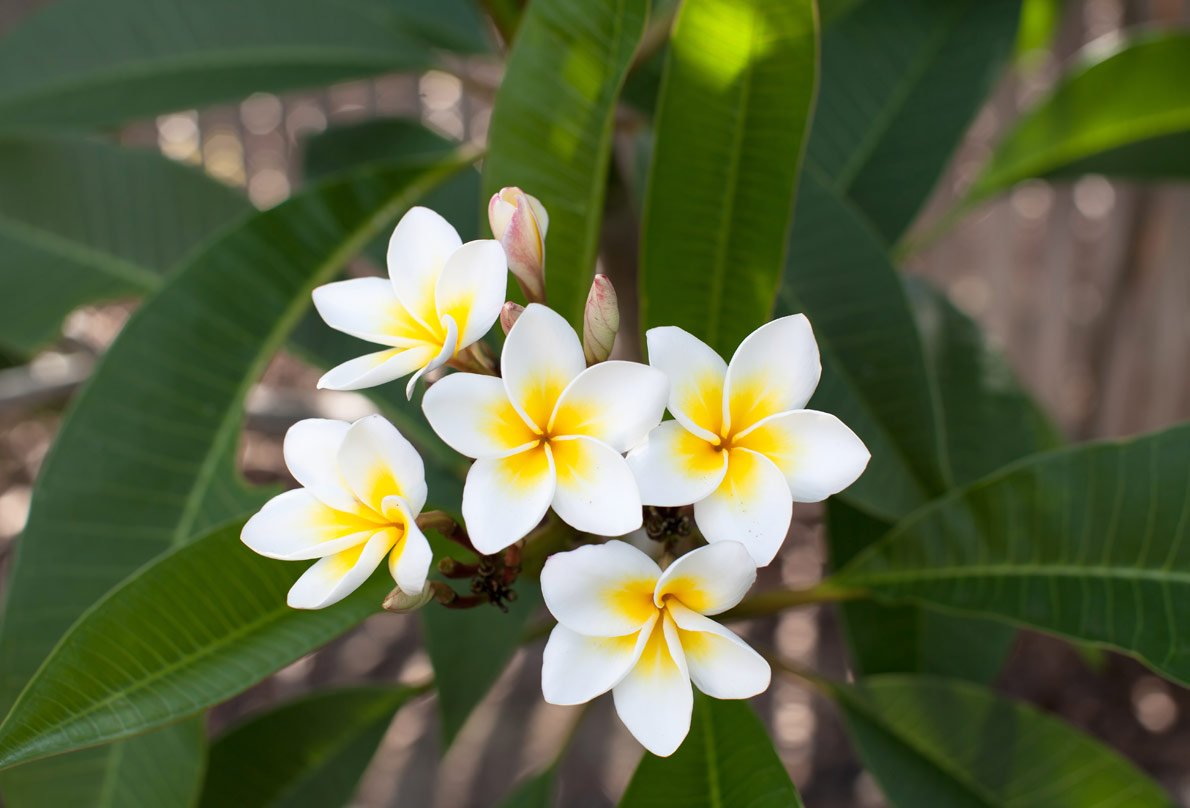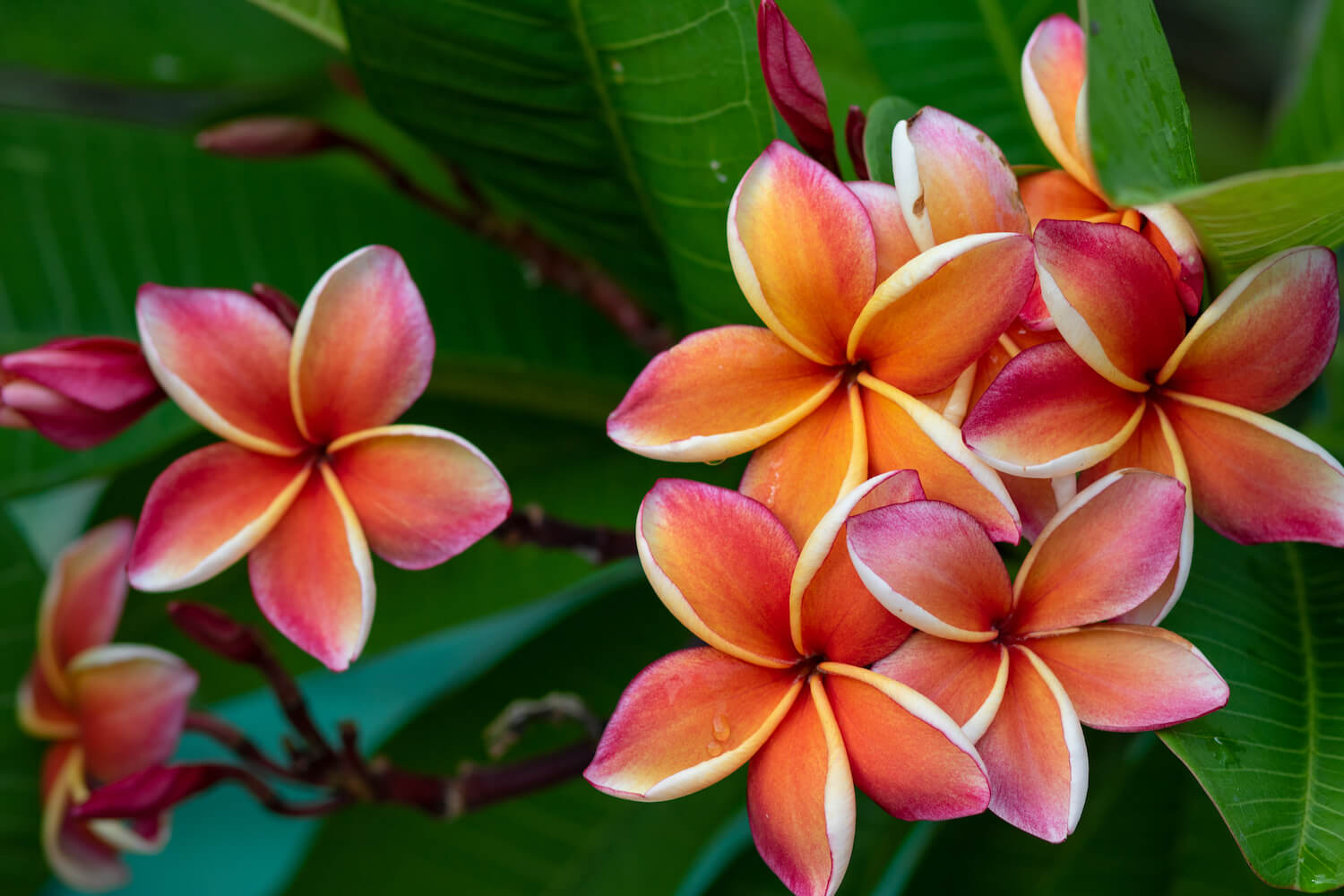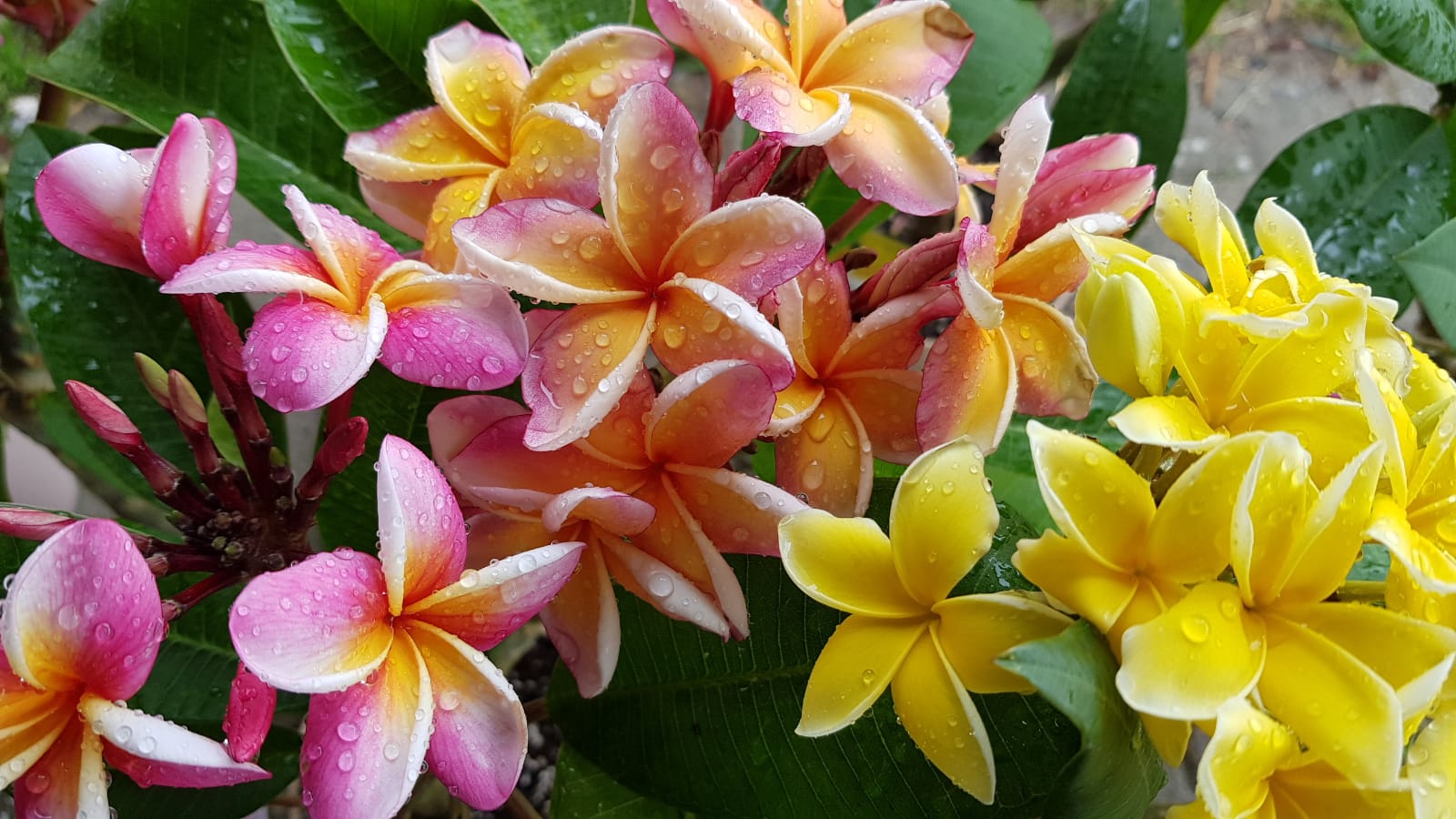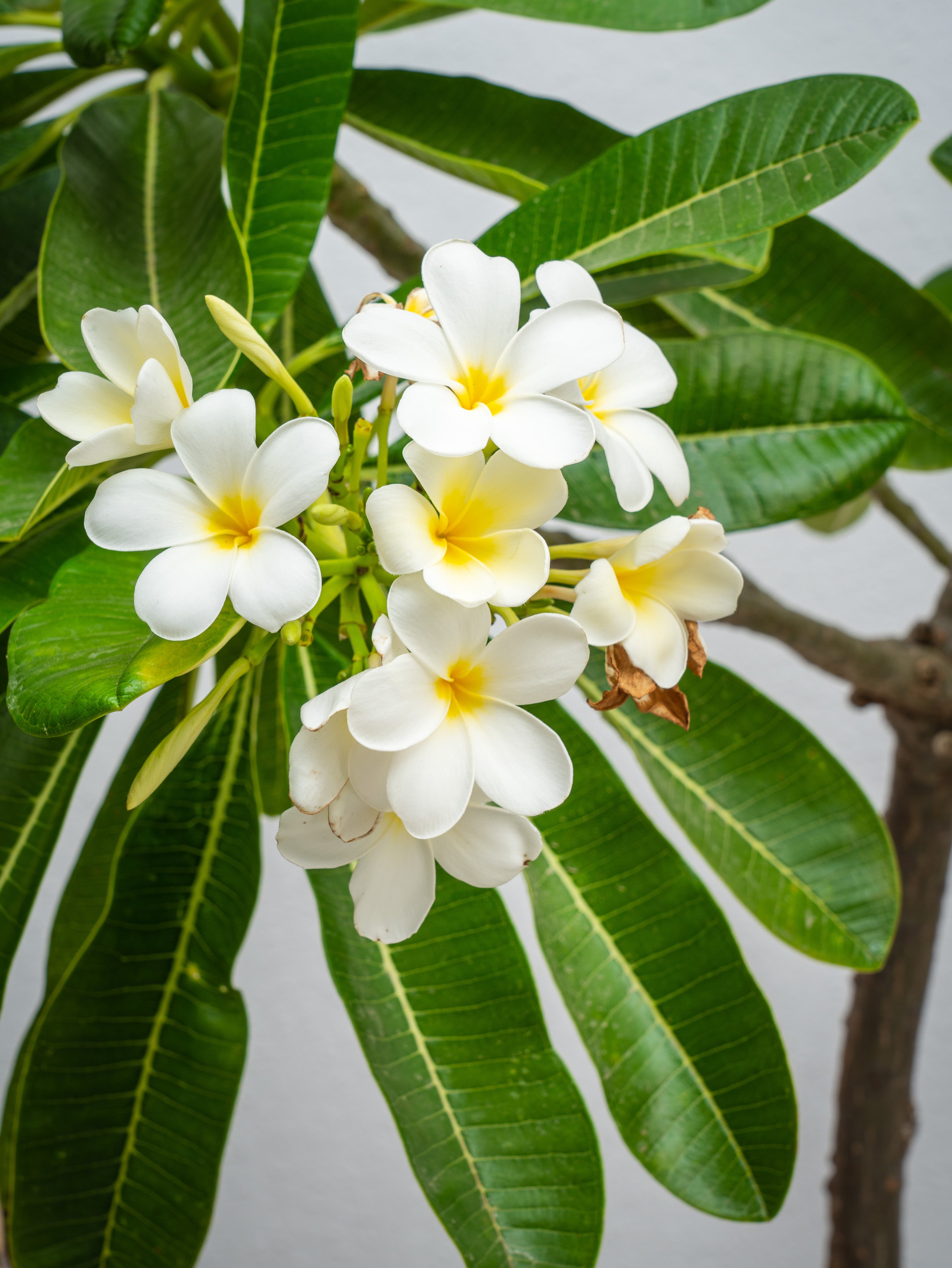During summer, the stunning frangipani is in full bloom all over Australia!
Thriving with minimal care and plenty of sunshine, the frangipani is an easy-to-maintain plant that adds a spectacular touch to any garden. This tropical tree is renowned for its fragrant yellow and pink flowers and distinctive fleshy branches.
The frangipani tree is remarkably resilient, and thanks to hybridization, it boasts a vibrant spectrum of colors. A single whiff of its scent is sure to captivate you.
With its beautiful blooms and distinctive fragrance, the frangipani is an excellent choice for your backyard. Whether you enjoy its shade, admire its flowers, or savor its delightful aroma, this tree is a perfect addition.
Frangipani flowers appear in summer and continue to bloom through autumn, from December to April. They come in a variety of single and bi-color combinations, ranging from classic yellow and white to pastel pinks and oranges, and even bold reds and lilacs.
Although the blossoms seem delicate, the trees are hardy, with long lifespans and can grow up to 8 meters tall. For smaller spaces, there are also compact varieties available.

How to Grow a Frangipani Tree
Growing a frangipani tree is quite straightforward. You can either buy a young plant from a local nursery or plant center, or propagate it yourself from a cutting.
Where to Plant Your Frangipani
Choose a location in your garden with full sun and protection from strong winds. Frangipanis thrive in well-drained soil, ample sunlight, and a frost-free climate.
Being a tropical beach plant, frangipanis prefer sandy soil and can tolerate salty coastal air. Heavy clay soils make growing frangipanis more challenging, so they may do better in pots.
Watering a Frangipani Plant
In dry summers, water newly planted trees once or twice a week when the soil feels dry. Once established, they are fairly drought-tolerant and mainly rely on rainfall, though occasional watering will benefit them.
When to Prune Your Frangipani
Prune your frangipani in spring before the leaves emerge and the sap starts to flow. Remove branches that rub together, those that are dead or diseased, and thin out the center of the tree to improve air circulation.
Avoid letting mulch touch the tree’s base, as the trunks are susceptible to fungal diseases, particularly in cold, wet weather.

Positioning Your Frangipani Tree
A frangipani tree can turn any garden into a captivating paradise with its summer blooms and enchanting fragrance. You don’t need to live in the tropics to enjoy this tree – it thrives anywhere with sunny summers and frost-free winters.
The sweet, heavenly scent of its flowers will infuse your garden, and you have a vibrant array of colors to choose from. It’s the perfect small tree for a garden, providing fragrant shade in summer while its bare branches allow the gentle winter sun to shine through.
Front Garden
In a small garden bed, a frangipani tree with its striking branches can make a bold statement. Pair its graceful foliage with bromeliads and larger alcantarea, and create a contrast with the textured leaves of purple waffle (Hemigraphis sp).
Backyard
If you’re in a tropical zone, enhance your outdoor space with southern indoor plants like colorful coleus and croton beneath your splendid frangipani. Background plants like cordylines and palms, along with Spanish moss, add a touch of silver to the scene.
Position your frangipani near your outdoor seating area so you can fully enjoy the summer shade and delightful fragrance.
On a Slope
Transform a slope into a charming tropical garden with small trees and shrubs, highlighted by a long-leafed frangipani and complemented by evergreen magnolias. Combine silvery emu bush and lamb’s ear shrubs for light, succulents and grasses for volume, and add tropical splashes of red with day lilies.
Pathways
Be adventurous with your planting and turn your pathway into a lush, mysterious retreat by grouping frangipani, hibiscus, cordylines, and angel’s trumpet together.

How to Choose the Right Frangipani Tree
- Look for a straight trunk, as a bent trunk can be unstable under the weight of foliage.
- Gently squeeze the base of the trunk and give it a slight tug to check for healthy roots.
- Ensure branches are positioned high on the trunk to maintain access underneath for weeding or mowing as the tree matures.
How to Propagate Frangipani from a Cutting
Propagating frangipani from cuttings is straightforward. The key is to let the cutting base dry and callous before planting.
- Cut a Branch: Use a pruning saw to cut a branch in mid-November.
- Prepare the Cutting: Remove most of the leaves and flower buds. Wrap the cut end with plastic wrap or a clear plastic bag, securing it with a rubber band. Leave it for 4-7 days.
- Dry the Cutting: Remove the plastic wrap and let the cutting dry in a shaded spot for a couple of days.
- Dip and Plant: Dip the cut end in hormone rooting powder and plant it in a 100 x 130mm pot filled with quality potting mix.
- Place and Water: Position the pot in full sun and water lightly when the mix is dry. If the mix needs watering daily, it indicates that roots are developing.
- Transplant: When roots emerge through the drainage holes, transfer the cutting to a garden bed or a larger pot.
- Fertilize and Water: Apply liquid fertilizer and a wetting agent every two weeks to support root development. Once leaves appear, water when the soil is dry.

4o mini

